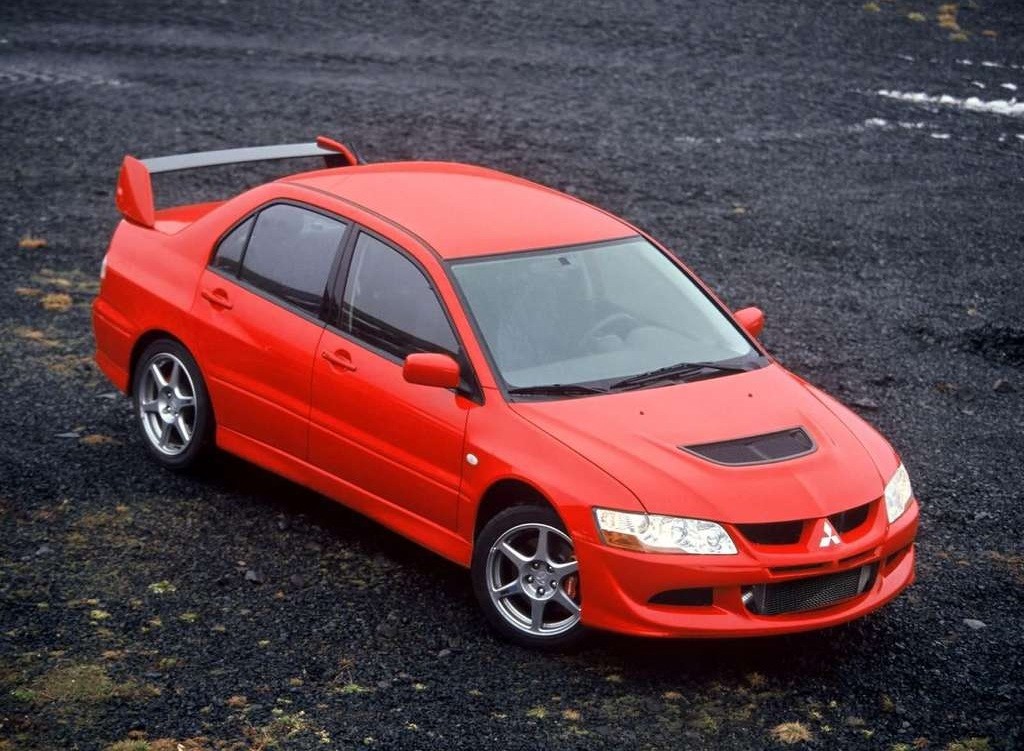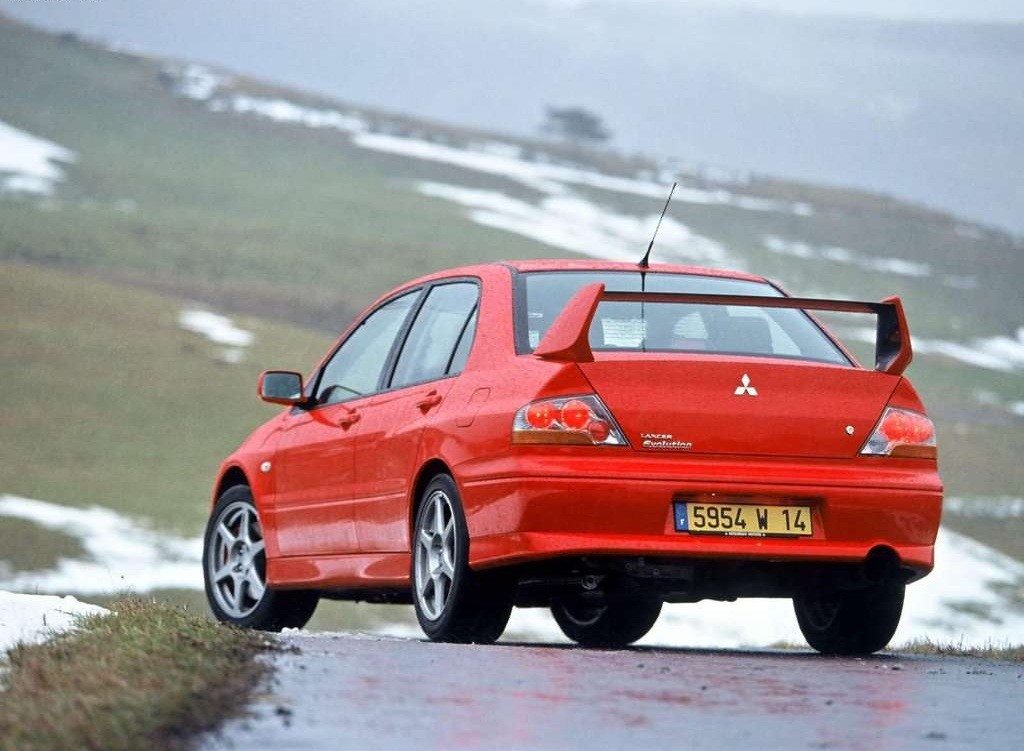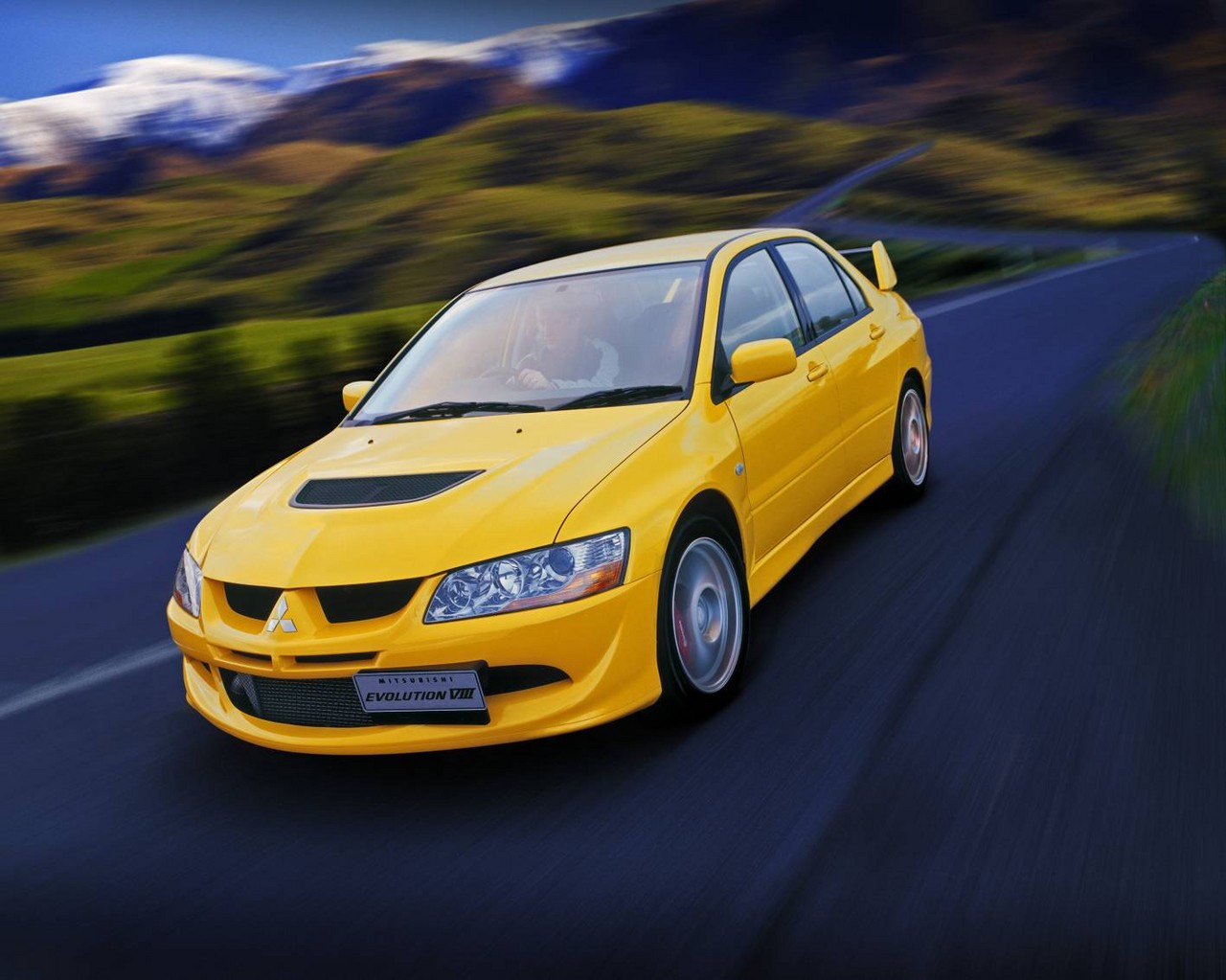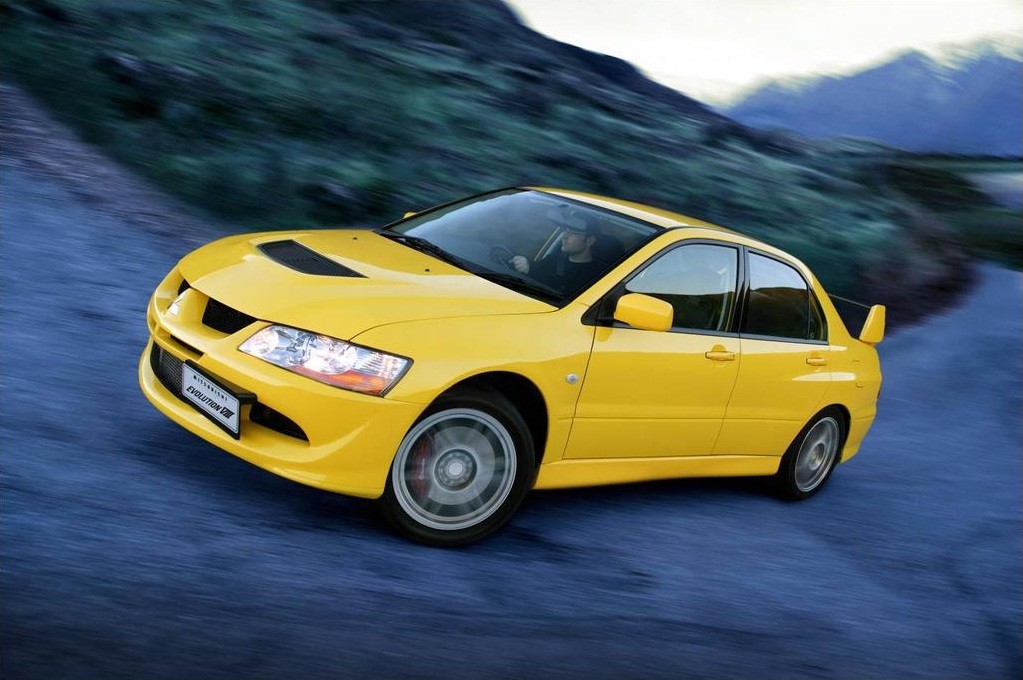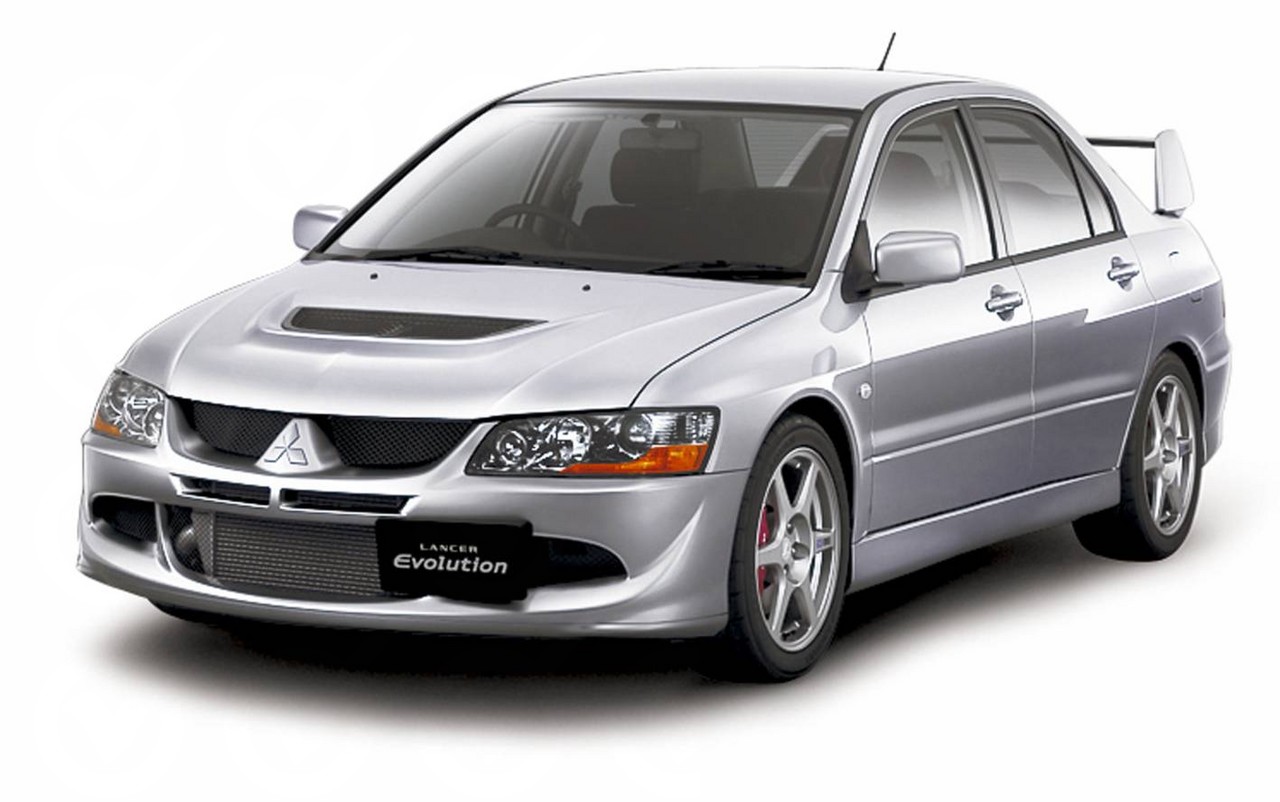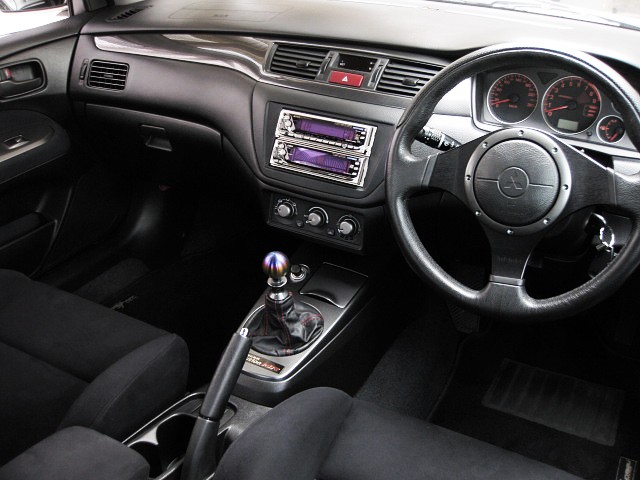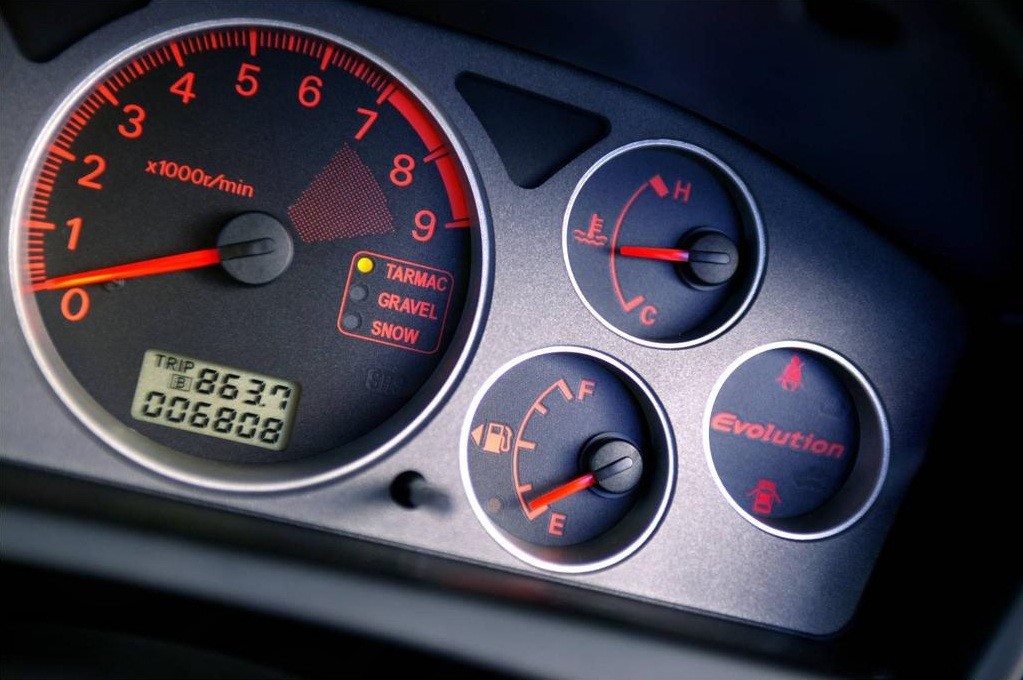
- Powerful turbocharged 2.0-litre engine
- 4WD traction makes for excellent dynamics
- Well-weighted, accurate steering provides excellent feedback
- Supportive Recaro front seats
- Responsive Brembo brakes
- Turbo lag and sluggish performance below 3000rpm
- Suspension lacks compliance
- Cabin lacks sound insulation
- Cheap interior materials
- No cruise control
- Large turning circle
Overview
Released in June 2004, the Mitsubishi CT9A Lancer Evolution VIII was a high performance sedan. The Evolution VIII was powered by a 2.0-litre turbocharged four-cylinder engine – with double overhead cams and four valves per cylinder – that was mated to a five-speed, close-ratio manual transmission. The Evolution VIII required 98 RON unleaded petrol.
The Evolution VIII was 4490 mm long, 1770 mm wide, 1450 mm tall and had a 2625 mm long wheelbase. Furthermore, the Evolution VIII had MacPherson strut front suspension and multi-link rear suspension (both with coil springs, anti-roll bars and gas-filled dampers).
Mitsubishi imported the Evolution VIII into Australia under the Specialist Enthusiast Vehicle Scheme (SEVS), limiting local imports to 200 models.
| Engine | Trans. | Peak power | Peak torque | |
|---|---|---|---|---|
| Evolution VIII | 2.0-litre turbo petrol I4 (4G63) | 5sp man. | 195 kW at 6500 rpm | 355 Nm at 3500 rpm |
4WD system
The Evolution VIII had a permanent four-wheel drive system which included an Active Centre Differential (ACD). In normal conditions, the system provided a 50:50 front/rear torque split. However, the ACD regulated the limiting force of the differential to match driver operation of the vehicle and driving conditions. Under hard acceleration, the ACD reduced slippages and approaches a locked state to transfer more torque to the road surface. Under rapid steering inputs, however, the ACD operated virtually as an open differential for improved steering response. The ACD also enabled the driver to select from three drive modes – Tarmac, Gravel and Snow – for optimum traction.
Furthermore, the Super Active Yaw Control system used a computer to regulate torque transfer in the rear differential. When accelerating through a corner, S-ATC would reduce understeer by transferring torque to the outer wheel. Conversely, when decelerating in a corner, torque would be applied to the inner wheel.
Safety equipment
Standard safety equipment for the Lancer Evolution VIII included dual front airbags, ABS, electronic brake force distribution, electronic stability control, traction control and front seatbelt pretensioners
The Evolution VIII was fitted with a Brembo braking package which included 320 mm ventilated front brake discs with four-piston calipers and 300 mm ventilated rear discs with two-piston calipers.
Features
Standard features for the Lancer Evolution VIII included 17-inch six-spoke Enkei alloy wheels with 235/45R17 93W high performance Bridgestone RE050 A Potenza tyres, a six speaker Eclipse sound system with CD player and MP3-compatibility, air conditioning, Recaro bucket seats with ‘Silkweave’ bolsters, rear fog lights, a three-spoke Momo leather-wrapped steering wheel, a leather-wrapped gearshift and handbrake, remote central locking, power windows and heated mirrors, a tilt adjustable steering wheel, an alarm (with tracking system) and immobiliser.
Related links

